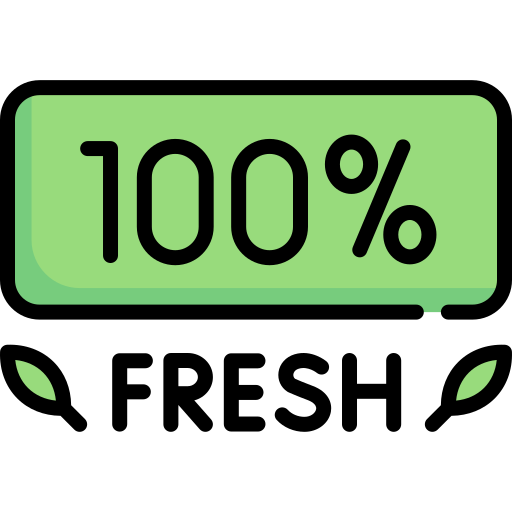This article may contain references to products or services from one or more of our advertisers or partners. We may receive compensation when you click on links to those products or services. Nonetheless, our opinions are our own.
The information presented in this article is accurate to the best of our knowledge at the time of publication. However, information is subject to change, and no guarantees are made about the continued accuracy or completeness of this content after its publication date.

Updated by Albert Fang
Have you ever dreamed of stepping away from the daily grind years before your peers, savoring the freedom to travel, pursue hobbies, or simply enjoy more time with loved ones?
Early retirement is enticing, but it feels like a distant dream for many. What if I told you that with the right strategies, retiring years early is not just a possibility but a tangible goal? You’ll discover four practical techniques to set you on the path to early retirement. From thoughtful financial planning to lifestyle adjustments, each step empowers you to take control of your future. Let’s explore how you can transform your retirement vision into reality and enjoy a life of freedom sooner than you ever thought possible.
- Understanding the Importance of Early Retirement Planning
- Best Investment Strategies for Early Retirement:
- Example Use Case: How One Person Retired at 40
- Identifying Your Retirement Goals and Lifestyle Aspirations
- Maximizing Your Savings Through Smart Budgeting Techniques
- Conclusion: Is Early Retirement Possible for You?
- Frequently Asked Questions
- Recommended Reads
Understanding the Importance of Early Retirement Planning
Planning for early retirement is more than just a financial decision; it’s a lifestyle choice that can profoundly affect your future. When you consider your retirement options early, you’re not just saving money—you’re crafting a vision of how you want to spend your golden years. Understanding the importance of financial discipline now can allow you to choose how you live later. By prioritizing savings and investments, you can create a more robust financial portfolio that paves the way for a fulfilling retirement.
Here are some key elements to keep in mind:
- Time is your ally: Starting early allows compound interest to work in your favor. Even small contributions can grow significantly over time.
- Identify your retirement goals: What does retirement look like for you? Visualize your ideal lifestyle, whether it’s traveling, pursuing hobbies, or simply enjoying leisure time at home.
- Making a budget becomes essential: A solid budget helps you track your spending and savings, ensuring you’re on the right path toward your retirement goals.
- Assess your risk tolerance: Knowing how much risk you’re willing to take can guide your investment decisions, helping you grow your savings more effectively.
To help visualize your progress, consider the following simple table as a guide for savings growth over time:
| Years Until Retirement | Monthly Savings ($) | Projected Total at 7% Interest |
|---|---|---|
| 10 | 500 | $77,255 |
| 15 | 500 | $156,991 |
| 20 | 500 | $302,140 |
You can strategically plan for an early and enriching retirement by grasping these fundamentals. Taking control of your financial future today can lead to the freedom you desire tomorrow.
For those seeking daily motivation and actionable tips tailored to financial freedom, subscribing to resources with consistently updated insights can supercharge your early retirement plan. Tools like Morning Download deliver streamlined analysis, trends, and personal finance stories right to your inbox—helping you stay ahead in managing investments, spotting new savings ideas, and sticking with your goals as markets change.
What Does Early Retirement Mean?
Early retirement generally means leaving full-time work before the traditional retirement age of 65. Some follow the FIRE (Financial Independence, Retire Early) movement, which emphasizes extreme saving and investing to retire in one’s 30s or 40s. Others aim for a more balanced approach, semi-retiring or switching to part-time work in their 50s.
Regardless of your goal, the key to early retirement is ensuring you have enough passive income or savings to cover your expenses indefinitely.
Step 1: Determine Your Retirement Number
Before you can retire, you need to know how much money you need. A commonly used rule is the 4% Rule, which suggests that if you withdraw 4% annually from your savings, your funds should last at least 30 years.
How to Calculate Your Retirement Number
- Estimate Your Annual Expenses—Consider housing, healthcare, travel, food, and discretionary spending.
- Multiply by 25—To use the 4% rule, multiply your annual expenses by 25.
- Example: If your expenses are $40,000 per year, you need $1,000,000 saved to retire early.
- Adjust for Inflation & Lifestyle—If you plan to travel extensively, relocate, or have major medical expenses, factor in additional costs.
Step 2: Maximize Savings & Cut Expenses
To retire early, you must save aggressively. Many in the FIRE movement aim for a 50%–70% savings rate.
Ways to Save More:
✅ Increase Your Income—Negotiate your salary, start a side business, or invest in skills that boost earning potential.
✅ Reduce Housing Costs—Consider downsizing, house hacking (renting out part of your home), or moving to a lower-cost-of-living area.
✅ Limit Discretionary Spending—Cut unnecessary subscriptions, eat out less, and embrace minimalism.
✅ Optimize Taxes – Use tax-advantaged accounts like 401(k)s, IRAs, and HSAs to reduce taxable income.
Step 3: Invest Wisely for Passive Income
Your savings need to grow to support you in retirement. Simply keeping money in a bank account won’t generate enough return.
Best Investment Strategies for Early Retirement:
📈 Stock Market (Index Funds & ETFs) – Low-cost S&P 500 index funds (like Vanguard’s VOO or Fidelity’s FXAIX) historically provide 7%–10% annual returns.
🏡 Real Estate Investing—Rental properties generate passive income and can appreciate in value.
💼 Dividend Stocks—Invest in dividend-paying stocks to receive passive income.
📊 Bonds & Fixed Income—Treasury bonds, municipal bonds, and REITs provide more stability in retirement.
🌎 Geo-Arbitrage—Move to a country with a lower cost of living while maintaining investments in stronger economies.
Step 4: Plan for Healthcare & Unexpected Costs
Since early retirees don’t qualify for Medicare (until 65), you need an alternative health insurance plan.
Healthcare Options for Early Retirees:
🏥 Health Insurance Marketplace – Government-subsidized plans based on income.
🏦 Health Savings Accounts (HSAs)—Tax-advantaged savings for medical expenses.
✈️ Medical Tourism—Some retirees seek affordable medical care in countries like Mexico or Thailand.
Step 5: Create an Early Retirement Withdrawal Strategy
To avoid running out of money, follow a structured withdrawal strategy:
Smart Withdrawal Strategies:
🔹 4% Rule—Withdraw 4% of your portfolio annually.
🔹 Bucket Strategy—Keep cash for short-term needs, bonds for medium-term, and stocks for long-term growth.
🔹 Roth IRA Conversion Ladder—Convert a 401(k) to a Roth IRA strategically to access retirement funds before 59½ without penalties.
Example Use Case: How One Person Retired at 40
📖 Case Study: John, a former software engineer, retired at 40 by saving 60% of his income, investing in index funds, and purchasing two rental properties. By age 38, he had a $1.2M portfolio, generating $45K/year in passive income. Now, he travels full-time while maintaining financial security.
Voted "Best Overall Budgeting App" by Forbes and WSJ
Monarch Money helps you budget, track spending, set goals, and plan your financial future—all in one app.
Get 50% OFF your first year with code MONARCHVIP
Identifying Your Retirement Goals and Lifestyle Aspirations
To kickstart your journey toward early retirement, it’s essential to clearly define what you want your post-career life to look like. Think about the lifestyle aspirations that drive you. Do you envision leisurely mornings at home, globe-trotting adventures, or pursuing passions sidelined during your working years? You can create a roadmap for your financial goals by outlining your desired retirement lifestyle. Here are a few aspects to consider:
- Travel Plans: Do you want to explore new countries or enjoy quiet staycations?
- Hobbies and Interests: Are there skills you wish to develop or projects you want to tackle?
- Family Support: How do you see yourself contributing to your family’s future?
- Healthcare Needs: Have you assessed potential medical expenses and care preferences?
After identifying your aspirations, it becomes much easier to set concrete financial goals. Consider creating a simple table to summarize your priorities and estimated costs:
| Aspect | Priority Level | Estimated Annual Cost |
| Travel | High | $5,000 |
| Hobbies | Medium | $2,500 |
| Family Support | Medium | $3,000 |
| Healthcare | High | $4,000 |
Aligning your finances with your aspirations can help you stay motivated and on track as you strive to retire early.
Maximizing Your Savings Through Smart Budgeting Techniques
One of the most effective ways to boost your savings and pave the way for an earlier retirement is by honing your budgeting skills. Start by tracking your income and expenses meticulously. Use apps or spreadsheets to categorize your spending and identify areas where you can cut back. This provides a clear financial picture and empowers you to make informed decisions. Consider working with these practical tips:
- Create a Zero-Based Budget: Allocate every dollar of your income to expenses, savings, or debt repayment.
- Prioritize High-Impact Savings: Reduce fixed expenses like housing and transportation to free up more money for savings.
- Automate Your Savings: Set up automatic transfers to your savings or retirement accounts to ensure consistent contributions.
- Review and Adjust Regularly: Monitor your budget monthly and adjust it as necessary to stay on track toward your goals.
To give you a better outlook, here’s a simple illustration of how small savings can accumulate over time:
| Monthly Savings | Annual Savings | 5-Year Growth (Assuming 5% Interest) |
| $100 | $1,200 | $6,644 |
| $250 | $3,000 | $16,194 |
| $500 | $6,000 | $32,388 |
This exercise demonstrates how even modest monthly savings can grow significantly over time, ultimately providing you with the means to retire earlier than you might have imagined. By implementing smart budgeting techniques, you’ll increase your savings and bolster your financial confidence as you approach your retirement goals.
Conclusion: Is Early Retirement Possible for You?
Yes! By following a high savings rate, smart investing, and careful planning, early retirement is achievable. Start by calculating your retirement number, maximizing savings, and investing in a diversified portfolio.
💡 Need help with financial planning? Consult a certified financial advisor to customize your strategy.
Frequently Asked Questions
What does it mean to retire early?
Retiring early means leaving the workforce before the customary retirement age, which is typically around 65. It involves achieving financial independence that allows you to live comfortably without relying on a full-time job.
What are some effective strategies to retire early?
There are several strategies to consider: (1) aggressive saving and investing, (2) reducing expenses, (3) increasing income streams, and (4) adopting a frugal lifestyle. Each approach can help you accumulate wealth faster and reach your retirement goals earlier.
How can aggressive saving and investing help in retiring early?
Aggressive saving involves putting away a significant portion of your income into savings and investment accounts. By opting for high-yield investments, such as stocks or real estate, your money can grow exponentially over time, allowing you to reach your retirement savings goal faster.
What role does reducing expenses play in early retirement?
Cutting expenses frees up more funds to be redirected toward savings and investments. This might mean downsizing your lifestyle, eliminating needless subscriptions, or finding affordable alternatives for everyday expenses.
Are there any risks associated with retiring early?
Yes, retiring early comes with risks, such as unexpected expenses, market volatility affecting investments, and the potential for running out of savings if not planned carefully. To reduce these risks, having a sound financial plan and an emergency fund is essential.
By staying committed to your financial goals and making informed decisions, you can achieve early retirement and enjoy the freedom it brings.

Reviewed and edited by Albert Fang.
See a typo or want to suggest an edit/revision to the content? Use the contact us form to provide feedback.
At FangWallet, we value editorial integrity and open collaboration in curating quality content for readers to enjoy. Much appreciated for the assist.
Did you like our article and find it insightful? We encourage sharing the article link with family and friends to benefit as well - better yet, sharing on social media. Thank you for the support! 🍉
Article Title: How To Retire Early
https://fangwallet.com/2025/02/17/how-to-retire-early/The FangWallet Promise
FangWallet is an editorially independent resource - founded on breaking down challenging financial concepts for anyone to understand since 2014. While we adhere to editorial integrity, note that this post may contain references to products from our partners.
The FangWallet promise is always to have your best interest in mind and be transparent and honest about the financial picture.
Become an Insider

Subscribe to get a free daily budget planner printable to help get your money on track!
Make passive money the right way. No spam.
Editorial Disclaimer: The editorial content on this page is not provided by any of the companies mentioned. The opinions expressed here are the author's alone.
The content of this website is for informational purposes only and does not represent investment advice, or an offer or solicitation to buy or sell any security, investment, or product. Investors are encouraged to do their own due diligence, and, if necessary, consult professional advising before making any investment decisions. Investing involves a high degree of risk, and financial losses may occur including the potential loss of principal.
Source Citation References:
+ Inspo
There are no additional citations or references to note for this article at this time.












































